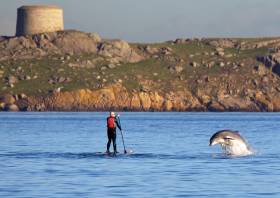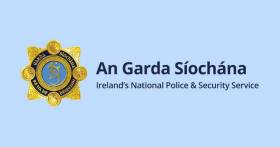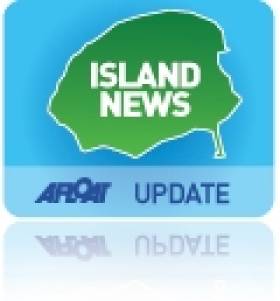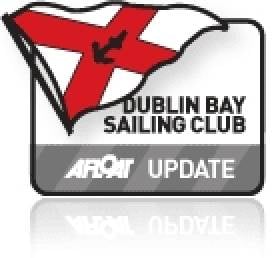Displaying items by tag: Dalkey Island
Ringsend and Dalkey Pay Respects to Late Ken ‘The Boatman’ Cunningham
Ringsend residents lined the streets of the south Dublin village to pay respects to the late Ken Cunningham following his funeral Mass on Saturday (3 February).
For many years Ken ran the passenger ferry, Licence No 1877, from Coliemore Harbour to Dalkey Island and made such an impact on the local community that Coliemore became affectionately known as “Ken’s Harbour”.
Ken was also an accomplished rower — unsurprising as he was one of the storied Cunninghams of Dalkey and East Coast rowing renown — and was a member of both Dalkey Rowing Club and St Patrick’s Rowing Club in Ringsend, which was his home in later years and where he leaves a lasting legacy.
Among those paying tribute on social media were Dakley Tidy Towns, who described Ken as “fund of knowledge and information on our surrounding waters”.
 Members of St Patrick’s Rowing Club form a guard of honour outside St Patrick’s Church in Ringsend at the funeral Mass for Ken Cunningham on Saturday 3 February
Members of St Patrick’s Rowing Club form a guard of honour outside St Patrick’s Church in Ringsend at the funeral Mass for Ken Cunningham on Saturday 3 February
Secrets Of Dalkey Island To Be Revealed
Size for size, Dalkey, aka Deilginis, must be the most story-covered island in all of Ireland. The ancient Irish monks were here. The Vikings were here. Thanks to Napoleon and Cape Mortella, it has its own Martello
Tower. A dinghy cruise-in-company to the island in 1887 played an important role in establishing the Dublin Bay Water Wag Class.
And today, it is the magic Treasure Island, a rite of seagoing passage for young people learning to sail in Dun Laoghaire. Peadar Curran has Dalkey Island as a lifelong interest. He tells all with the DBOGA in Poolbeg Y&BC this Thursday night (November 16th), and you can support the lifeboats while you're at it.
Council Launches Online Visitor Survey For Dalkey Island
Dun Laoghaire-Rathdown County Council is currently carrying out a visitor survey for Dalkey Island to assist in the long-term management and protection of a key historical and ecological site in Dublin Bay.
Dalkey Island, which is owned by the council, is a part of the Dublin Bay Biosphere, and is home to a significant colony roseate terns, not to mention seals, rabbits and wild goats.
The island has also been an important site of pilgrimage for many centuries, and was previously knows as St Begnet’s Isle.
The online survey aims to quantify the number of visitors and the quality of their experience. It will only take a few minutes to complete, and is available HERE.
Is Your Boating Equipment Protected? Forcing a Change at Irish Water & The Battle on Dalkey Island
Thefts of outboard motors and break-ins to boats on moorings were prevalent a couple of years ago. My own boat suffered nearly €6,000 of damage and theft when it was broken into on the mooring at Crosshaven in Cork Harbour during that spate of robberies. An alert, dedicated Garda detective in Cobh on the other side of Cork Harbour recovered some of the items when he located the culprits.
"This week three outboard motors were recovered in Kinsale"
This week three outboard motors were recovered in Kinsale thanks to a member of the public who spotted two men acting suspiciously near the water’s edge at Scilly. They fled, leaving behind a dinghy with three outboard engines in it. Gardai, called to the scene, discovered that attempts had been made to remove engines from two other boats in the harbour area.
"Garda advice is to lock-up your equipment"
That has led to a timely reminder from Gardai who observed that the boating season seems to be starting earlier ever year, urging owners to protect their equipment. Some owners told me after my boat was broken into, that they leave their hatches unlocked on moorings to avoid any break-in damage, but I wonder what about equipment aboard cruisers? The Garda advice is to lock-up and mark your electronic and other equipment. Use your Eircode or some other marking that cannot be removed and take a photograph of the equipment and its marking.
Good advice….and that was one of three stories which stand out for me this week ….. The name change forced on the organisation which has done great work in water safety is another and then there is the battle on Dalkey Island off South County Dublin.
Forcing a Change at Irish Water
John Leech, a well-known and experienced race officer and sailor, who is also Commodore of Lough Derg Yacht Club, is Chief Executive of Irish Water Safety and very devoted to the protection of life in the water…. He told me this week that his organisation is changing its name and that is all because of Irish Water.
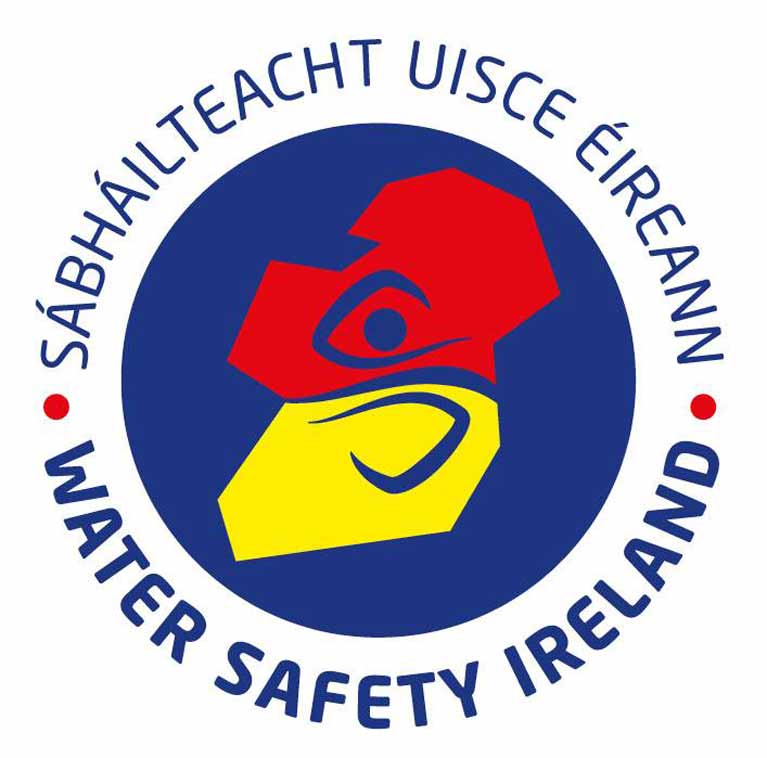 Water Safety Ireland's new logo
Water Safety Ireland's new logo
“Since ‘Irish Water’ was established in 2013, it has caused Irish Water Safety considerable difficulty. Some members of the public get confused and believe we are “Irish Water. We can take up to 15 or 20 phone calls a day from angry and frustrated members of the public who have water supply problems. As a result of this confusion, we requested to our partner Department, Rural and Community Affairs that our name be changed to ‘Water Safety Ireland’.”
• Listen to John Leech on the Podcast below as he explains this.
The Battle on Dalkey Island
So, onto Dalkey Island where BirdWatch Ireland and the Royal Society for the Protection of Birds, are currently baiting rats under the EU-funded Roseate Tern LIFE Programme to protect seabirds. It’s not the only island on the East Coast which has a problem with rats and funding to remove them hasn’t been easily made available.
 Dalkey Island viewed from Killiney Hill Photo: Wikipedia
Dalkey Island viewed from Killiney Hill Photo: Wikipedia
“If we can keep this island and its satellites rat-free, then other burrow-nesting and crevice-nesting species could potentially settle there,” Dr. Stephen Newton, Senior Seabird Conservation Officer at BirdWatch Ireland, told me on my radio programme, THIS ISLAND NATION and added:” Who knows, we might even one day have Puffins nesting on Dalkey Island?” Non-toxic bait and ‘flavoured treats’ in combination with trail cameras will also be used to ascertain whether the rates have been got rid of.
• The Podcast below has more details of the brown rat menace to inshore islands on the East Coast.
#MarineNotice - Mariners are advised that a Port Lateral Mark has been deployed marking Leac Buidhe Rock, north of Dalkey Island.
The buoy has the following light characteristic Fl(4)R.6s, and will be seasonally deployed from April to October. It can be found at position 53°16.650’N 006°05.100’W.
Afloat.ie understands that the mark placement has been made at the suggestion of Dublin Bay Sailing Club, after a number of incidents in which boats have been damaged by contact with Leac Buidhe Rock.
In 2015, Winter DBSC Turkey Shoot organiser Fintan Cairns issued a warning to competitors to look out for the rock that had caused problems for competitors. See the warning to competitors and a photo of Leac Buidhe here.
While welcoming the new buoy, Cairns also says 'unfortunately it will only be marked for summer months so we will have to be careful during winter'.
Divers Rescued In Dalkey Island Drama
#Rescue - Two divers were rescued yesterday afternoon (Sunday 20 August) after they failed to surface during a dive off Dalkey Island.
The dive boat cox alerted the Irish Coast Guard by marine VHF and began a search patter procedure as Dun Laoghaire Coast Guard’s four search units, Dun Laoghaire RNLI’s all-weather lifeboat and the coastguard helicopter Rescue 116 were all tasked to the scene.
The lifeboat and helicopter backed up the dive boat and coastguard search of the coast from Coliemore Harbour to Killiney Beach, a distance of some 15km.
Within minutes, coastguard members searching off Whiterock spotted the divers being pushed towards the coast with the tide and wind as weather conditions worsened.
All vessels were alerted, and the dive boat recovered the two divers, who were said to be in good spirits despite their ordeal.
In a second callout yesterday, Dun Laoghaire Coast Guard volunteers were tasked to assist a 17ft boat with engine failure being towed to Dun Laoghaire Harbour by lifeboat. All aboard were reported in good condition.
New Slipway on Dalkey Island Officially Opened
#DalkeyIslandSlipOpens – Dalkey Island's newly constructed slipway harbour was officially opened today by An Cathaoirleach of Dún Laoghaire-Rathdown County Council, Cllr Carrie Smyth, writes Jehan Ashmore.
Speaking at the launch at Coliemore Harbour, An Cathaoirleach said: "I am delighted to be able to officially open the new slipway on Dalkey Island in what are my last few days as Cathaoirleach. Dalkey Island is a truly beautiful and important part of our county and I congratulate all of those who contributed to this project."
As previously reported on Afloat.ie, the works of the slipway landing stage were carried out by Richard Nolan Civic Engineering and took almost a month to complete.
The upgrade which cost €350,000 was part of a PART 8 Programme which was implemented following a study undertaken in January 2010 that identified that the existing slipway on the island had fallen into a state of disrepair, restricting access at low tides.
According to Declan Nolan of the contractors, some of the work days involved extended 18 hours due to access delays caused by the vagaries of the sea.
During the main construction stage, this necessitated use of a self-propelled pontoon barge, the Kesmit that transported heavy plant machinery weighing more than 20 tonnes and building supplies that were loaded at Dun Laoghaire Harbour.
The new slipway is stepped at various heights for the tidal range and is overall higher than that of the previous structure. A widened channel and dredging has created easier and safer access for boats to berth.
Most importantly, the public can once again safely visit Dalkey Island which is designated as one of 16 parks within Dun Laoghaire-Rathdown County Council.
Dalkey Island's strategic location between Dublin and Co. Wicklow provides an experience that is a unique place with significant seascapes of both Dublin and Killiney bays. In addition the 20-acre island's importance is varied in terms of ecological, archaeological, architectural and cultural heritage.
As for tourism potential, a new combined visitor ticket to the Dalkey Castle & Heritage Centre and passage to the island by a licensed commercial ferryboat will be made available for the first time.
There has not been a ferryboat service for three years, though the reinstatement of such service is expected to return within the next fortnight.The delay is due to the final stages of the new slipway where safety features to improve boarding and disembarkation is currently underway.
Equally similar works at Coliemore Harbour are also in progress to address and improve safer and easier access for boarding and disembarkation.
It is understood that Tim Carey, Heritage Officer of the DLRCoCo who launched the Dalkey Islands Conservation Plan: 2014-2024 along with Cllr Carrie Smyth earlier this week, has already granted a permit for the ferryboat which too has been certified with a license from the Department of Transport.
Only when such safety feature works are completed on both the island and the mainland that the commercial ferryboat service will resume. The boat is licensed to take five passengers on each of the 4-minute hop crossings to the island.
A popular south Dublin boating spot is set to be back on the Dublin Bay boating map again this Summer thanks to Dun Laoghaire Rathdown County council (DLRCoCo) plans to install a new landing jetty on Dalkey Island.
The proposal to upgrade the island's slipway and pier will allow boats to bring people to the island for the first time in almost two years.
There is still access to the island but possible only by small tender to a rough jetty. Most boating visitors merely anchor off and enjoy the island's quiet anchorage, wildlife and the magnificent views of the surrounding Dublin and Killiney bays.
The works will involve the slipway being slabbed to make for safer surface. Steps will also be provided to enable easier movement from the slip to the pier deck; the construction of which is currently very poor. Access steps on the island will also be widened and previously placed mooring rings and handrails, which have corroded, are to be replaced.
The positioning of a handrail along the northern side of the slip, pier and steps, will also make it easier and safer for people to go about their business, as will a galvanised ladder and a steel pole at the seawards end of the slipway which will act as a navigation aid, DLRCoCo say.
The island is only a short sail of less than 30 minutes from nearby Dun Laoghaire Harbour and its town marina. Over 1,000 pleasure craft berthed there could visit the heritage site if facilties were improved.
Dun Laoghaire-Rathdown County Council has decided that the pier should be completely replaced with a new raised concrete structure, new steps constructed and handrails added.
Body Found In Search For Missing Dalkey Island Swimmer
#MissingSwimmer - RTÉ News is reporting that a swimmer taken from the water after going missing off Dalkey Island in Dublin Bay this morning (Sunday 7 April) has died.
Earlier this evening The Irish Times reported that the 35-year-old man was in a critical condition in Tallaght Hospital after being recovered from the water off Sorrento Terrace.
Lifeboat volunteers with Dun Laoghaire RNLI and the Irish Coast Guard's Dublin-based helicopter Rescue 116 were involved in the search which began around 11am today after the swimmer failed to return to shore.
Dublin Bay Dinghy Sailors Plan Famous Landmarks Race
#dbsc – Dublin Bay sailors Paul Keane and Hugh Sheehy have announced plans for a unique sailing event in Ireland this coming sailing season.
The Island Trial, an open sailing time trial on a fixed course in Dublin Bay was first announced on Sunday 23rd March to the local dinghy sailors who had gathered to collect prizes and wind up the 42nd Dun Laoghaire frostbite season.
The 11km fixed course utilises famous local landmarks and Dublin Bay racing marks which are laid on the bay from Mid April to October each year.
What makes the event truly unique is that to enter sailors must provide a GPX tracking file which verifies the course sailed and the start and finish times. This means the course is open every day (and night) and sailors can decide when they would like to have a go.
At the moment there are two prizes up for grabs. First is the Bragging Rights Cup for the outright record which is being eyed up by the local moth and skiff fleet, although some big boats may have a chance too.
Then there's the Handy Sailor Silver Salver - the trophy for the winner on corrected time - which highlights the skill of the crew, no matter what their boat. Other prizes such as a junior trophy will be added as the event progresses.
The event has piqued the curiosity of many and several sailors visiting Dun Laoghaire for the biennial 4 day regatta in July will have a go at the trial. All boat types are welcome, from foiling moths to MOD-70s.





























